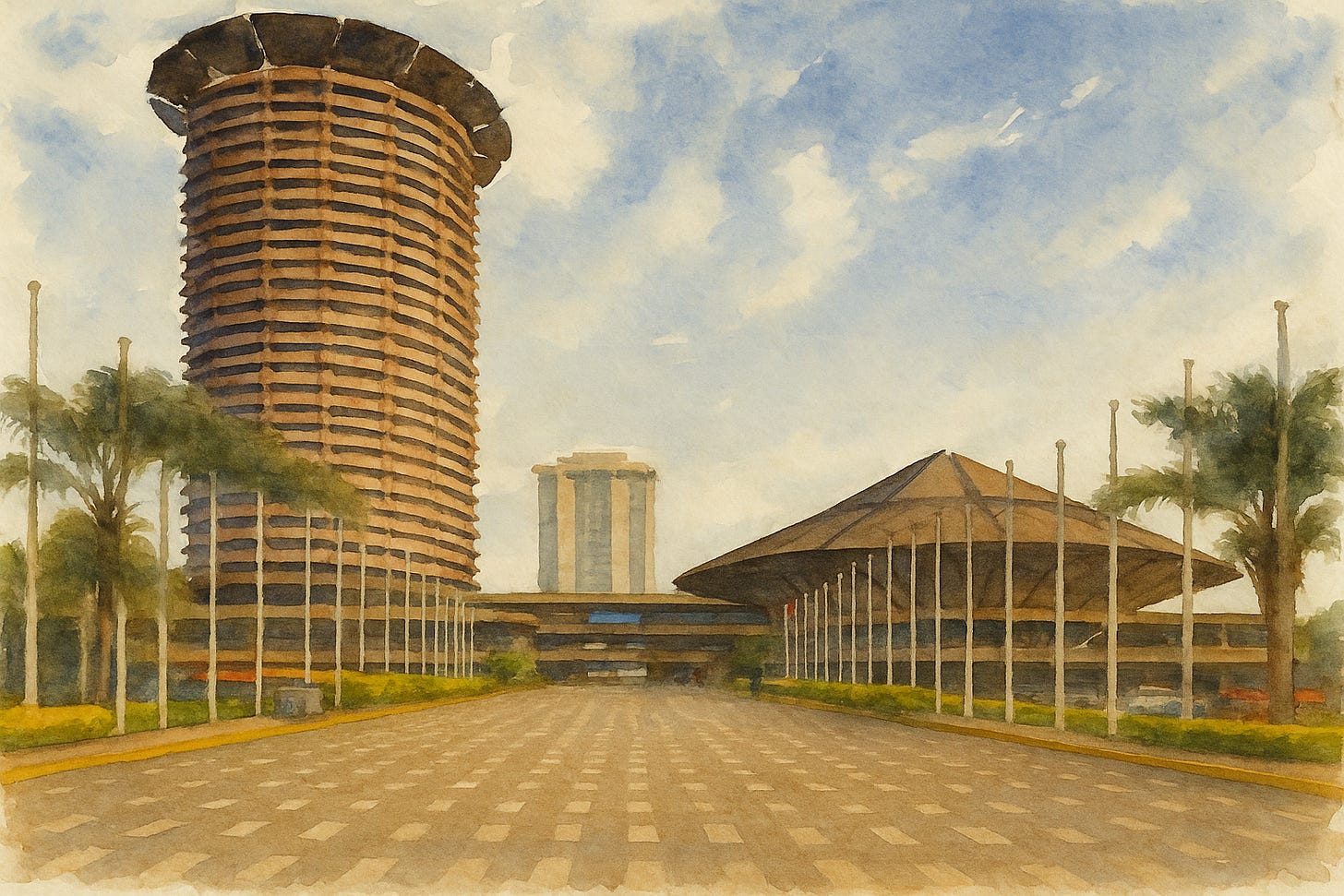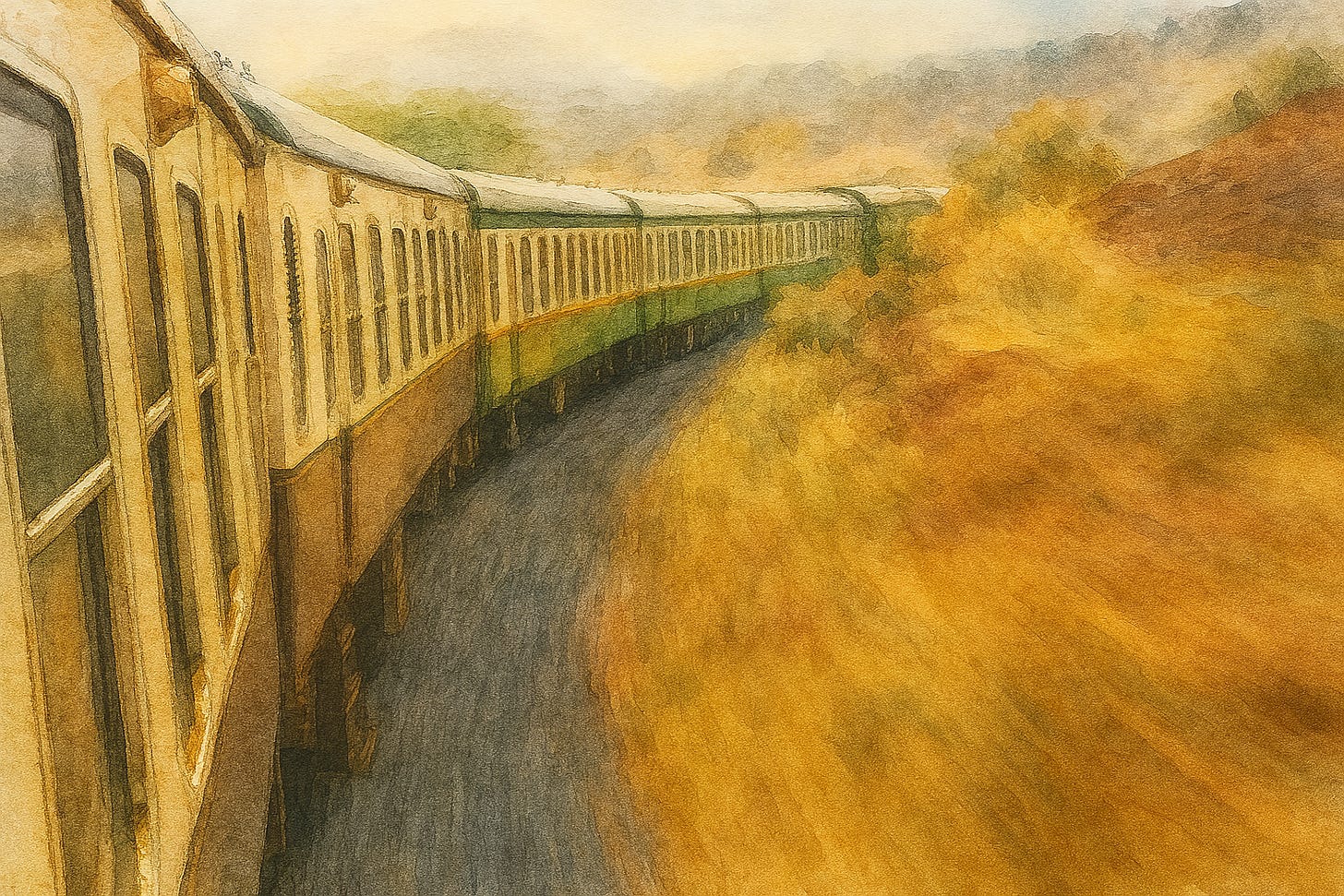If you are of a certain age you watched the 1996 Val Kilmer and Michael Douglas film “The Ghost and the Darkness,” which chronicles the building of the Uganda Railroad between Mombassa on the Kenyan coast and Kisumu, a bustling city on the shores of Lake Victoria and the nearby Uganda border (more on that in a later journal entry). The 660-mile railroad, most recently renamed as the Kenya-Uganda Railway, will forever live in my heart as the Lunatic Line, the name for which it is best known.
Why is it called the Lunatic Line? Well, thousands of Indian laborers and British overseers died during its construction from 1896-1901. If you were unlucky you got malaria and faced a slow death. If you were lucky you got eaten by a lion. Dear reader, you should know by now that such an outcome was intoxicating to me; I would have firmly selected option B, death by lion, until I heard one roar in the jungle. It is no exaggeration to say the throaty sound rattles your soul.
Saturday arrived. I had long hours to kill, so I paid homage to my favorite rooster in Uhuru Park then walked around downtown. I was entranced by the sight of Kenyatta Tower, then the tallest building in East Africa and the home office of President Arap Moi. I desperately wanted to get inside and ride to the top to take photos for the first of many travel stories I was planning. The only person guarding the place was a sleepy security guard, who accepted a small bribe – a diplomatic practice I’ve always respected – and waved me onto the elevator to the roof. Security, as you can tell, was not a high priority in Kenya until 1998, when al-Qaeda operatives exploded a truck bomb outside the U.S. embassy, killing 213 and injuring another 4,000. Alas, the early 1990s were an innocent time for international travellers.
In the early evening I climbed into a taxi with my backpack and camera bag (for the photographically inclined, I was shooting Ektachrome slide film of various speeds) . We drove across town to the marvelously chaotic Nairobi Central Railway Station. I looked for bewildered white faces but didn’t see any so I headed to the tracks to find my carriage and, hopefully, UREP companions. And there the six of them sat, crowded into a few seats that included a spot for me.
As you can imagine, the folks who pay thousands of dollars to volunteer to do fieldwork for a graduate student in the rainforest of east Africa are well educated, smart, adventurous, and very, very white. I sat next to a young woman named Debbie, who had been rewarded by her parents for her recent college graduation with a trip to Africa.
The train chugged out of the station around midnight in inky darkness, the sun having set hours ago because Nairobi sits a mere 1.2 degrees north of the equator. We swapped introductions and worries as we settled in for the seven-hour ride to Kisumu, where our eager grad student (a talk, lanky Belgian fellow named Marc) awaited. We hoped.
It is hard to convey the imagination-sweetened reality of that train ride. The little boy from Arizona was riding through the humid African night in a carriage traveling the blood-stained tracks of the Lunatic Line. The moon highlighted archetypal scenes from the savannah that streamed by the windows, opened wide to the pungent scents and alarming sounds of Africa. I was half asleep, half awake with wonder, even as Debbie’s head bopped on my shoulder, dropping beads of sweat onto a tee-shirt that, by the end of this trip, would be nothing but ruins.
The temperature continued to rise over the course of the night as we dropped from the volcanic highlands (Nairobi sits at 5,889 feet above sea level) to the soggy marshland that marks the last 100 miles and signals an approach to Lake Victoria.
We pulled into the Kisumu Railway Station just after sunrise. Today’s version of the city does not resemble the dusty port and transit hub of the early 1990s. Because it sits on the shores of Lake Victoria it remains a key player in the fishing industry, but the intrepid UREP crew was less interested in fish than spotting our ride. After disembarking, we waited for about an hour for Marc (cell phones had yet to be invented) before I left the group to walk down the street to a restaurant that looked like a KFC but was adorned with a red and white sign that read American Fried Chicken. I guess there are not a lot of folks in East Africa who know what Kentucky is.
Sitting in that restaurant, surrounded by Africans who clearly, based on the quantity and duration of stares, had limited interaction with white Americans. I realized that being “white” was not a default setting for the entire world, an understanding that has shaped my perception for the last 50 years. Paradoxically, I felt at home. By the time I was in sixth-grade I had attended four schools in three states. I was the perennial new kid, a role I came to embrace with anger and pride.
When I was an undergraduate working toward a BA in Comparative Literature I was assigned the first book that captured my preferred relationship with society. Herman Hesse’s Steppenwolfe provided me with a protagonist I fully identified with, and I’ve fashioned myself as a lone wolf ever since. Here in a dusty town in Africa, where I was clearly an unwelcome outsider, I felt comfortable. I didn’t have to waste any emotional energy trying to fit it. Those of you who belong to my tribe will understand.
Many years later, thanks to TikTok (source of all that is good and true in the modern world), I learned my personality type has a name: Hyper-independent. The hallmarks of this personality trait are as follows: extreme autonomy, reluctance to ask for help, fear of vulnerability, and perfectionism. The condition, which I confirmed via more traditional sources of psychological information, is often a coping mechanism for individuals who have experienced trauma or neglect. They may have learned to rely solely on themselves for safety and protection, as I did moving from town to town without the umbrella of sibling or friend protection. Didn’t that make me a perfect candidate to join a science expedition to Africa while spending four weeks working in close quarters with a small group?
Author’s note: This is the ninth and final entry in the Africa section of a travel memoir that will recount my adventures around the world prior to my career as an educational thought leader. To quote my muse, Miley Cyrus, “I know I used to be crazy/I know I used to be fun/You say I used to be wild/I say I used to be young.” New entries for the Africa section of the memoir will be published twice per week, followed by a similar release pattern for the sections of the memoir focused on South America, Australia, and Europe. I strongly advise reading them in numerical order - it’s a narrative, folks. Entries #1, #2, #3, #4, #5, #6, 7, 8, 9.
Note to Readers: The next section of my travelogue/memoir will describe adventures in South America. That continent, it seems, offers a variety of interesting ways to die, too. Read Entry #1 of Interesting Ways to Die … in South America.




